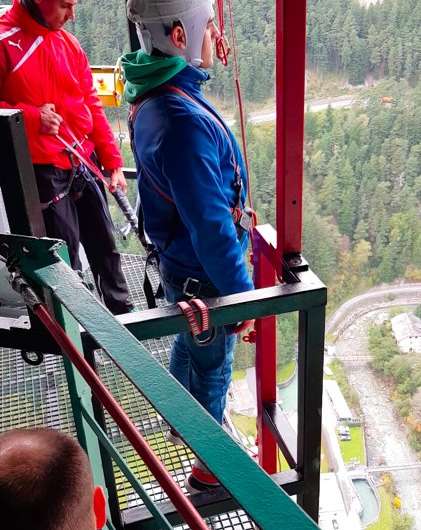What happens in the brain before a bungee jump?

Surjo R. Soekadar, psychiatrist and neuroscientist at the University of Tübingen, and his doctoral candidate Marius Nann have for the very first time succeeded in measuring the readiness potential, outside a laboratory and under extreme conditions, namely prior to a 192-meter bungee jump.
The readiness potential is a characteristic electrical voltage shift in the brain that indicates an upcoming willful act, and that appears even before a person becomes aware of his/her own conscious decision to act. The results of the study will be published in an international journal later this spring.
The readiness potential was first described in 1964 by Hans-Helmut Kornhuber and Lüder Deecke, who measured the brain waves of a test person over hundreds of finger movements and under strict laboratory conditions. Despite numerous studies, the readiness potential has never been measured in a real-life situation: Since the voltage shift is in the range of only a few millionths of a volt, only measurements under laboratory conditions were considered possible.
To advance the development of brain-machine interfaces, the researchers from Tübingen wanted to find out whether the readiness potential can be assessed in everyday environments. In addition, they were interested in whether the willpower necessary for initiating an act would influence the characteristics of the brain potential. For the study, two semi-professional cliff divers agreed to have their brain waves recorded before jumping from the second tallest bungee jumping platform in Europe, the 192-meter Europa Bridge near Innsbruck in Austria.
After only a few jumps, the researchers were able to measure the readiness potential beyond any doubt. "Once again, the current experiment shows that the boundaries of the possible are shifting and that neurotechnology might soon be part of our everyday life," Soekadar says. "The small number of jumps necessary for the experiment shows that the readiness potential prior to a bungee jump is very well expressed," Nann explains.
More information: Marius Nann et al. To jump or not to jump: The Bereitschaftspotential required to jump into 192-meter abyss, (2018). DOI: 10.1101/255083

















